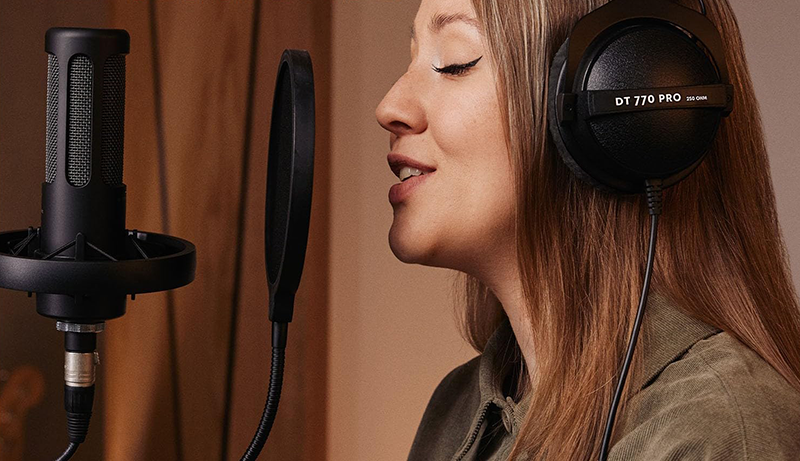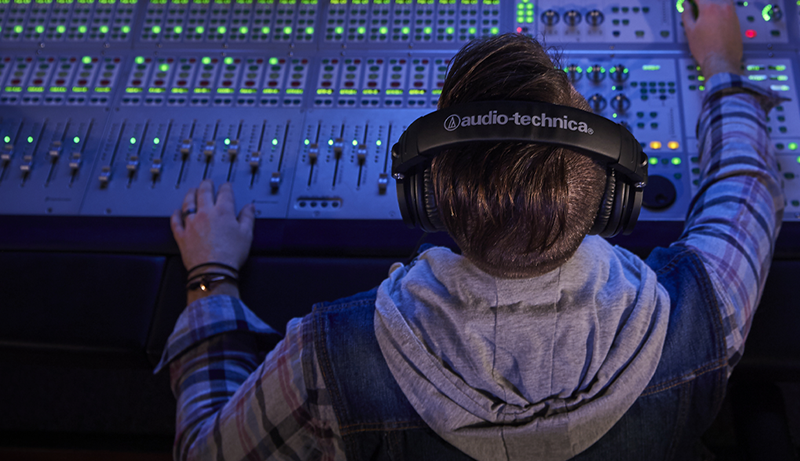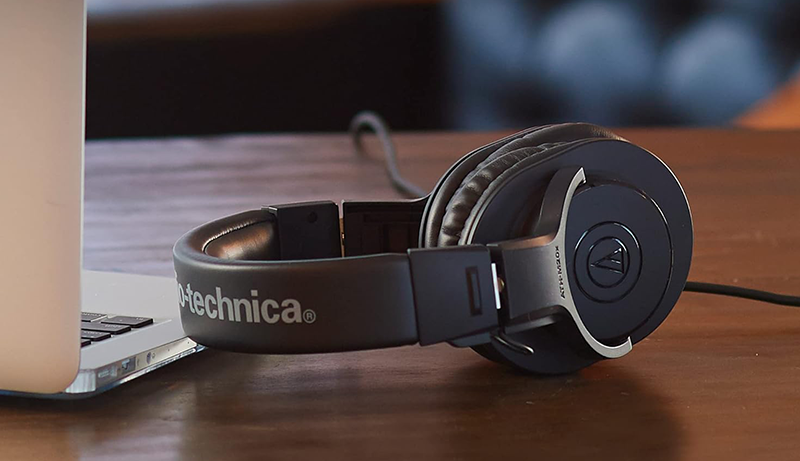When I’m prepping for a vocal session, I always make sure to arrive at least 30 minutes before the singer. Even if the engineer has already dialed in a top-tier mic chain, the headphone mix is what I’m most concerned about.
A poorly balanced mix can throw the artist off completely. If the track is too loud, they might hold back and sing too softly. If it’s too quiet, they’ll struggle with timing and pitch because they can’t lock into the groove. Getting it right is crucial—and honestly, it’s a delicate balance.
Low-quality headphones can derail a session fast. Whether it’s weak bass response, excessive bleed into the mic, or overly harsh high frequencies, bad headphones can make the entire process frustrating for everyone involved.
Thankfully, headphone technology has come a long way. These days, there are some truly excellent options out there that can elevate your sessions and help artists perform at their best.
1. Sennheiser HD 280 Pro
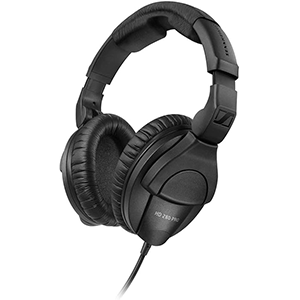
Sennheiser consistently delivers quality with lightweight comfort, and the HD 280 Pro is a perfect example. I often use these headphones when reviewing vocal takes, especially outside the studio. Their excellent noise isolation makes them ideal for remote vocal sessions or tracking in live environments.
The HD 280 Pro’s noise attenuation is a huge plus — it helps prevent bleed from loud playback and blocks out ambient noise, which is crucial when recording vocals with a full band. The sound is tight and natural, with punchy bass that avoids muddiness and crisp highs that never feel harsh.
I especially rely on these when recording modern pop vocals, particularly with female artists. Their balanced response preserves the transient energy of pop tracks — not just in drums but in synths and loops, too. That accurate translation of both frequency and dynamics is what sets them apart.
Comfort-wise, they’re impressively lightweight — I can wear them for hours without fatigue. My only gripe is the synthetic leather ear pads, which feel a bit cheap and may wear out quickly. Still, for the price and performance, the HD 280 Pro is a fantastic choice for serious vocal production.
2. AKG Pro Audio K271 MKII
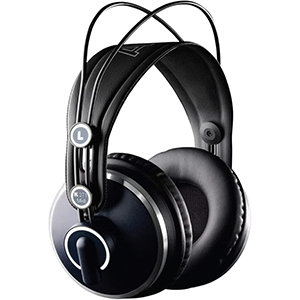
The AKG K271 mkII is a closed-back, over-ear headphone designed to minimize mic bleed — a must for clean vocal recordings. With AKG’s long-standing expertise in microphones, their approach to noise isolation is top-tier. One standout feature is the replaceable earpads, which are not only practical for longevity but also essential for hygiene during heavy use.
Artists come in all styles — from hats to big hair — and these headphones adapt comfortably thanks to their elastic, self-adjusting headband. It’s a smart, inclusive design.
Sound-wise, the K271 delivers AKG’s signature airy, extended high-end, reminiscent of their C414 mic, making it ideal for capturing acoustic textures. The low-end is surprisingly deep and controlled, which is why many DJs and electronic producers trust them, too.
However, I prefer these for indie, folk, or acoustic sessions. While they shine with organic instruments like piano, strings, and acoustic guitar, their bright top-end can feel fatiguing on punchier pop tracks — where I lean toward the Sennheiser HD 280 instead.
In a recent NPR-style session with felted pianos and vintage instruments, the K271 offered the perfect blend of clarity and warmth. They’re a fantastic studio staple — my only complaint is that they’re a bit on the heavy side.
3. beyerdynamic DT 770 Pro
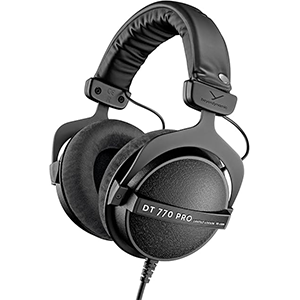
I once described ADAM’s German monitors as punchy, loud, and powerful — the same goes for the Beyerdynamic DT 770 PRO headphones. I’ve used them on several projects, and when it comes to capturing natural transients in drums and percussive instruments, these are the best I’ve tried.
Their spacious impulse response gives a remarkable sense of depth and stereo placement. Instruments retain their position in the sound field, making them ideal for film scores, orchestral sessions, and live band recordings.
While the Sennheiser HD 280 PRO handles electronic and loop-based transients well, the DT 770 PRO excels with acoustic instruments and unprocessed audio. Their smooth, detailed sound makes them perfect for strings, hand percussion, and vocals in cinematic or folk settings.
On a recent fantasy game score session, I worked with a top-tier LA vocalist who brought her own DT 770s. She said they helped her deliver better performances because she rehearsed with them — and I totally got it. Their sound translates beautifully to mastering speakers and monitors.
They’re closed-back, over-ear, and bleed-resistant, with smooth highs and excellent bass. My only gripe? The sub-lows can feel a bit woofy instead of tight. Still, they’re a phenomenal choice for natural, dynamic productions.
4. Sony MDR7506 Pro
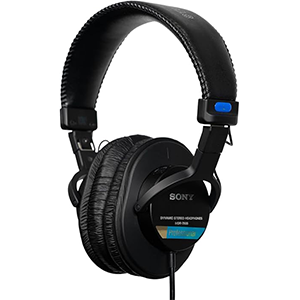
Sony headphones have long been a favorite among audiophiles for their incredible detail and clarity across all genres. The MDR-7506, in particular, is fantastic — but almost too polished. While I don’t usually mix on headphones, I also steer clear of overly hyped ones. These Sonys aren’t the most honest, but they shine in vocal tracking.
They add a high-end, glossy character to rough mixes that helps vocalists lock in emotionally, even when the track isn’t fully dialed in. This is especially useful when you need to overdub immediately after tracking, without time to fine-tune a headphone mix.
Their detailed midrange really cuts through, which makes them ideal for background vocals and harmonies. On dense EDM tracks with saw synths, like something from Swedish House Mafia or deadmau5, the mids can get crowded fast. The MDR-7506 helps vocalists hear themselves clearly, even when layering doubles or harmonies.
Build quality is top-notch — I saw a pair at Capitol Records that’s been in use since Michael Bublé’s first Christmas album. That said, the coiled cable is a pain. It’s bulky, gets snagged on stands, and really needs a redesign.
5. Audio-Technica ATH-M50x
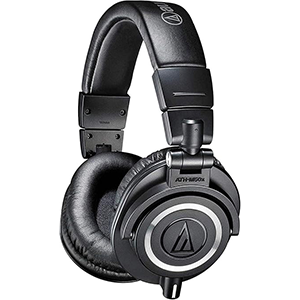
The Audio-Technica ATH-M50X headphones are true jack-of-all-trades — rugged, reliable, and built to handle just about anything. They’re my go-to for recording high-energy vocalists, especially wild rock singers who move around a lot. These over-ear, closed-back cans offer excellent noise isolation and can get impressively loud, making them ideal for live band vocalists and rock or rap sessions.
While the frequency response isn’t the most extended at the extremes, it’s more than enough for vocal tracking. What they offer instead is balance — and that’s exactly what you need to build quick, effective rough mixes that inspire confident performances.
I use them often for rap and hip-hop vocals, where volume and distortion resistance matter most. No matter how loud the vocal gets, these headphones never distort or compress. That kind of robustness is invaluable. They also enhance electric guitars with a slight 10kHz boost, adding excitement that helps vocals punch through the mix — perfect for tracking, though less so for mixing.
They’re also great for content creation. In a recent podcast/acoustic session, they delivered clear sound for both music and conversation, even outdoors. My only complaint? The headband lacks flexibility, and they can feel heavy during long sessions.
Choosing the Best Headphones for Vocal Recording
Headphones are the vital bridge between the track and the vocalist’s performance. What singers hear in their headphones directly impacts how they deliver their vocals — pitch, timing, and overall energy. Yet, producers often overlook this. While thousands get spent on mics, synths, and monitors, headphone quality is sometimes an afterthought. That’s a big mistake.
Genre Matters
Just like microphones, headphones should be matched to the music. For bass-heavy genres like electronic or hip-hop, you’ll want headphones with strong low-end handling — something like Sennheiser models. For folk, acoustic, or orchestral music, Beyerdynamic’s detailed transient response shines. If you produce across multiple styles, consider owning a couple of different pairs.
Comfort is Crucial
A comfortable vocalist is a better performer. Headphones that are too heavy, tight, or awkward can quickly derail a session. Test them out for at least 30 minutes before buying, and if you’re working with artists who wear hats or have big hairstyles, try them with a cap. Flexible, adjustable designs like AKG’s are a safe bet.
Frequency and Dynamic Response
Good headphones don’t just reproduce sound — they translate dynamics. If you want one versatile pair, go for a balanced, smooth response like those from Audio-Technica or Sennheiser. If you prefer more color or gloss, Sony or AKG might suit your taste better. Just remember: the goal is to help the vocalist perform, not to mix. Save the fine-tuning for your studio monitors.
Durability and Build
Headphones take abuse — from sweaty sessions to loud playback and frequent travel. Especially in genres like hip-hop or rock, volume matters. Some artists need it loud. Look for rugged models that can withstand constant use. Avoid overly flashy builds if you need a workhorse pair — save premium or fragile models for studio use only.
Final Thoughts
Vocals are the emotional center of most songs. No matter how much time you spend crafting intricate sound design or mixing effects, listeners will focus on the vocal. And for vocalists, the studio can be intimidating. Self-doubt creeps in, and even seasoned singers can lose objectivity.
The good news? Modern headphones have improved drastically — helping reduce bleed, deliver clear mixes, and keep artists comfortable and confident. I remember when bleed was so bad, you had to surgically cut every gap in Pro Tools just to clean up the take.
Focus on choosing headphones that support your artist, your genre, and your workflow. When you do, you’re already halfway to capturing a killer vocal take.

